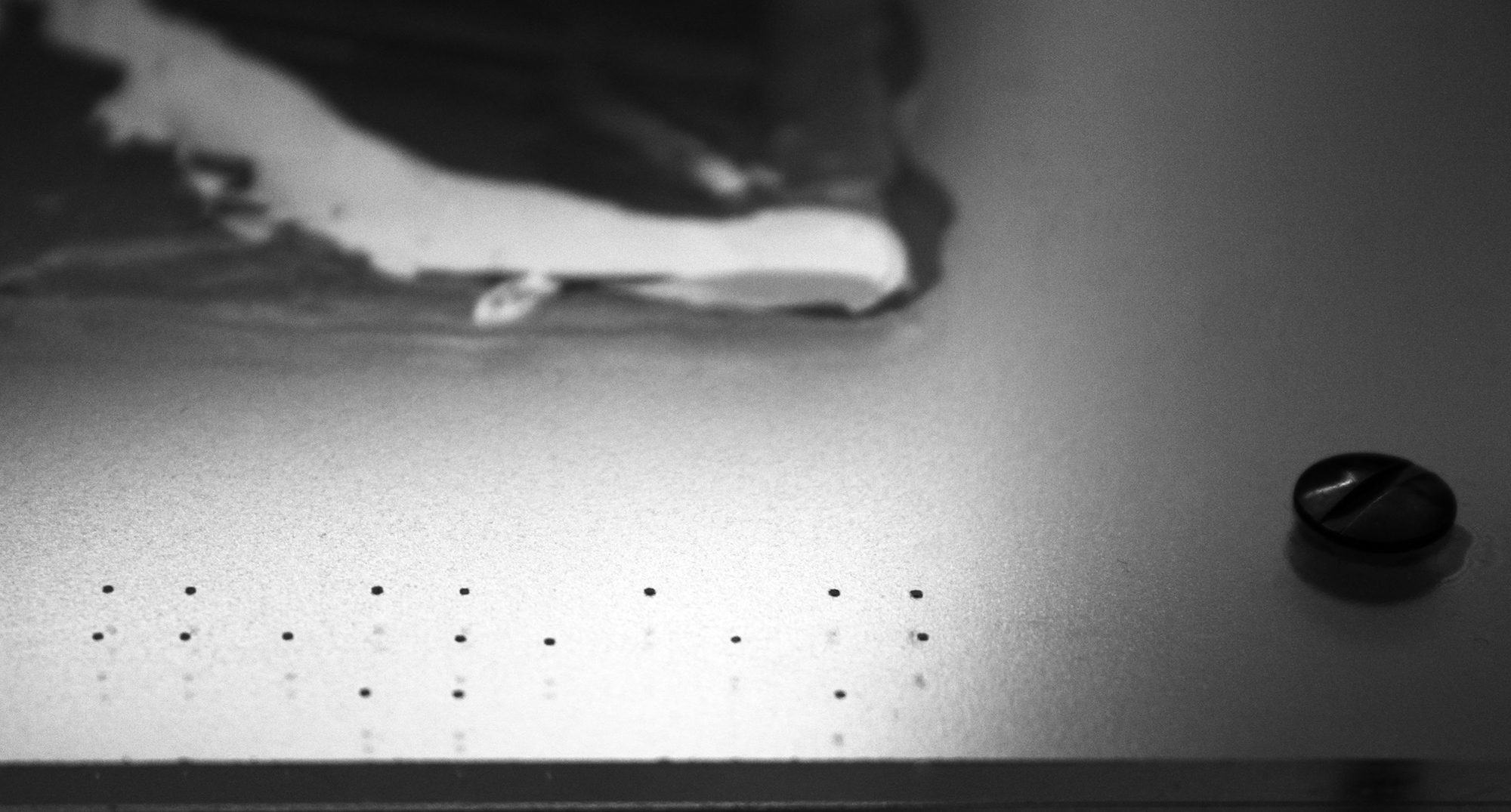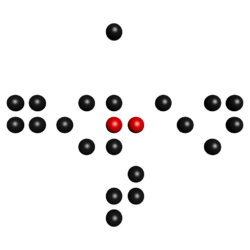Writings/Schriften
Heterutopias/Heterutopien
To the english version of the essay
Heterutopien
In meinen Kunstwerken verwende ich modernistische Mittel, um ein postmodernes Ergebnis zu erzeugen/erzielen. Wie ist dies zu verstehen?
Die Verwendung modernistischer Mittel dient mir, um in Grenzbereiche vorzustoßen und dadurch den Blick auf ein Residuum freizumachen/-legen. Zu beachten ist aber hierbei, dass die modernistischen Mittel immer die Gattungsgrenzen einhalten, aber reduktionistisch an die Grenzen dieser Gattung gehen. Jenseits dieser Grenze ist der Übergang von der Malerei zur Skulptur als postmodernes Ergebnis anzufinden. Der modernistische Rahmen wird gesprengt, so dass das Ergebnis ein antireduktionistisches ist.
Das Modernistische an meinen Kunstwerken ist das Universelle in meinen Kunstwerken zur Anwendung zu bringen, ohne das Ergebnis an eine postmoderne Indifferenz preiszugeben. Die Utopie des Modernismus wird von der Heterotopie der Postmoderne in Schach gehalten und umgekehrt, ohne den jeweils Anderen matt zu setzen. Um des Spiels, das gespielt wird, willen. Es ist ein oszillierender und ambivalenter Balanceakt zwischen Modernismus und Postmoderne.
Das Neben-/Ineinander der Gattungen zeigt die gleiche Gültigkeit derselben, ohne sie der Gleichgültigkeit anheimfallen zu lassen. Gleiche Gültigkeit, ohne Gleichgültigkeit. Gleich sein, ohne gleich zu machen. Gleich sein, ohne identisch zu sein. So ist es und bleibt es eine Sache der Perspektive, die man einnimmt, aus der mal die eine, mal die andere Gattung in den Blick rückt. Sie haben das gleiche Existenzrecht. Gleichermaßen.
Es sollte nun ersichtlich sein, dass ich in meinen Kunstwerken zwar immer wieder das Modernistische und Postmoderne als Mittel und Zweck benenne, mich aber eher dazwischen positionieren möchte. Während der Modernismus der Utopie zugeordnet wird, ist sie in der Postmoderne der Heterotopie gewichen. Die Utopien von Subjekt, Wahrheit, Freiheit verlieren in der Heterotopie an Bedeutung: sie zerfallen, fragmentieren. Ich möchte beiden Topoi etwas abgewinnen, ohne etwas an ihnen und an sie zu verlieren. Durch die Oszillation zwischen Modernismus und Postmoderne wäre es für mich also eher angebracht, von meinen Kunstwerken als Heterutopien oder heterutopischen Werken zu sprechen. Das Heterutopische an meinen Werken, um die es mir geht, ist ein absurder Moment im Übergang von Modernismus und Postmoderne, an dem ich innehalten möchte. Dieser absurde Moment ist die Freiheit für Etwas, zu dem ich in meiner Entscheidung verurteilt bin und für die ich als Humanist die Verantwortung tragen muss.
Aber in der ästhetischen Sphäre meiner Kunstwerke ist diese Entscheidung eine leichte: die Perspektive, die ich als Betrachter jederzeit zurücknehmen bzw. revidieren kann. Meine Kunstwerke sind Versuche von Visionen, an denen die Revision geübt werden kann.
Das heterutopische Sein ist ein Mindestmaß an Sein. Dieses Mindestmaß an Sein ist zwischen dem Sein als Universellem und Residuellem zu verorten. Das Sein als Residuelles steht immer schon im unverstandenen Widerstreit zum Sein als Universellem: darin gipfelt der Widerstreit zwischen Modernismus und Postmoderne. Ich versuche, diesen Widerstreit von einem Konflikt wieder in einen Dialog zu überführen, indem ich als Medium/als Künstler zeige, dass Modernismus und Postmoderne nicht inkommensurabel sind.
Frankfurt am Main, 21.02.2016
Zur deutschen Version des Essays
Heterutopias
In my works, I use modernist means to a postmodern end. How can this be understood?
The use of modernist means serves me to push through to an extreme and to open the view for a residuum through this extreme. Attention should be paid to the fact that these modernist means are within the limitations of the respective discipline, but are in a reductionist way at the limits of this discipline. Beyond this limit is the transition of painting to sculpture (for example) as a postmodern end. The postmodern end is antireductionist and goes beyond the modernist scope.
The modernist part of my works is applying something universal without exposing the result to a postmodern indifference. The utopia of modernism is kept in check by the heterotopia of the postmodern and vice versa, but without checkmating each other. This whole system is for the game being played, not for the game being won. It is an oscillating and ambivalent balancing act between modernism and the postmodern.
The parallel/intertwining of the disciplines shows the equi-validity without falling prey to indifference. Being equal without equalizing. And being equal, not identical. It remains a matter of perspective that you occupy. But each discipline has its own and equal right to coexist with the other.
Now, it should be clear that the position I would like to occupy is between modernism and the postmodern. While modernism is assigned to utopia, in the postmodern this utopia gave way to heterotopias. The utopias of subject, truth and freedom became less important in heterotopias: they moulder and fragment. I want to get something out of both topoi without losing something to them and from them. I will refer to this in-between-position that I described as an oscillation between modernism and the postmodern as “Heterutopia/s” and my works as “heterutopian works”. The heterutopian of my works is an absurd momentum in transition from modernism to the postmodern. This absurd momentum is the freedom of choice to which I am damned and for which I have to bear responsibility as a humanist.
But in the aesthetic sphere of my works, the decision is an easy one: the perspective that I am able to withdraw from or revise anytime I want. My artworks are attempts of visions, on which you can practice revision.
The heterutopian being is an unavoidable minimum of being. This minimum of being is to be located between the universal being and the residual being. The residual being is always in an opaque conflict with the universal being: this is the conflict that modernism and the postmodern culminates in. I try to transfer this conflict into a dialogue by showing as an artist that modernism and the postmodern are not incommensurable.
Frankfurt/Main, February 21st 2016
Back to the beginning of the essay

